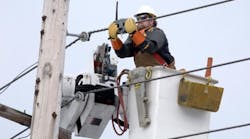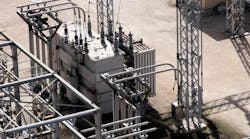Tollgrade Communications, Inc. has announced its new substation monitoring application as a cost-effective way to avoid some of the leading causes of preventable transformer failures. The application is an addition to LightHouse, Tollgrade’s fault-detection and distribution monitoring platform. With the addition of substation monitoring, the platform enables utilities to have much greater visibility and reliability without installing costly backhaul communications like fiber optic lines. Tollgrade’s LightHouse sensors have integrated communications, are hot stick deployable, and only take a few minutes to install. There is no need to roll fiber, de-energize substations or re-wire. Configurable alarms and reports allow utilities to know when transformers are being stressed by overloading or are in danger of aging prematurely due to unbalanced load.
“One of the most challenging tasks a utility faces is having actionable visibility in their distribution network, particularly as their assets like substation transformers age and face the stress of unforeseen conditions, demands or extreme weather,” said Erik Christian, vice president Smart Grid at Tollgrade Communications. “Most utilities are forced to leave some percentage of their substations unmonitored because the costs of outfitting them with new equipment and communications have been prohibitive. Now, with LightHouse, it is possible to hang a few smart grid line sensors with integrated wireless communications at a substation in a matter of minutes and have immediate visibility that can help avoid an outage or failure.”
The cost of replacing substation transformers after they fail unexpectedly in the field is dramatically more expensive than repairing the asset. To avoid this preventable situation, LightHouse includes configurable overload reports and alarms that can be customized to the transformer manufacturer’s nameplate rating. These alarms can also be prioritized by severity and events are captured in a dashboard for future analysis. The solution also reports when phases are out of balance, accelerating the aging process. Additionally, peak load reporting allows utilities to get real-time data, eliminating the costly expense of sending crews out in the summer and winter to manually collect this data.
With sensors deployed at the substation, utilities can take also advantage of LightHouse’s fault detection capabilities to know when outages occur and where to send crews for faster power restoration. Information flows directly and transparently into a utility’s existing SCADA, Historian or Distribution Management System (DMS). For utilities that do not have these systems, LightHouse can be installed in the utility data center or hosted as a service. This combined benefit of substation monitoring with fault detection is especially valuable in rural environments where crews have long drive times. By eliminating truck rolls and crew time spent in the field, LightHouse can make a financial impact, removing operational costs and allowing utilities to deliver safe, affordable and reliable energy.


